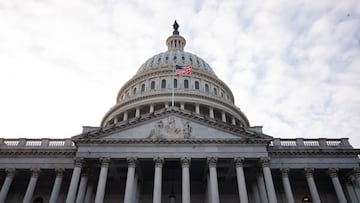Unemployment benefits: the new requirements to claim
Pandemic Unemployment Assistance was abused with unprecedented fraud this year. How will the new safeguard this time round affect ability to claim?

The $900 billion stimulus bill passed by Congress this week and signed into law by president Donald Trump Sunday includes a stimulus check of up to $600 for qualifying Americans, with households also able to claim an additional $600 for child dependents aged 16 or under. It combines the all-important checks with funding for the US federal government, money to help businesses pay employees, a month-long extension of the eviction ban and funding to distribute the coronavirus vaccine.
The freshly passed law also extends the CARES Act’s Pandemic Unemployment Assistance (PUA) program by at least 11 weeks into March 2021. The catch is that it adds a new verification process to prevent fraud that could impact nearly 10 million people currently drawing from the program as well as new applicants in 2021, according to CNBC.
What does the new verification process mean for my PUA application?
From today, individuals who currently claim PUA benefits have 90 days to submit documents proving their continuing eligibility for the program. If you are unable to do so, you could be at risk of having to return PUA funds provided after the bill’s enactment.
We don’t know yet precisely what the Department of Labor and individual state agencies will require as part of this verification process, says Employ America policy advisor Elizabeth Pancotti.
What is Pandemic Unemployment Assistance?
PUA extends regular unemployment benefits to people who don’t traditionally qualify, including self-employed, freelance and gig workers. These individuals may be able to prove that they are self-employed and lost income directly due to coronavirus by providing a 1099 form or “information return” of earnings history.
However, PUA also covers you if you’ve been directly impacted by covid-19 in other ways;
- You cannot work because you contracted the virus or are caring for a sick household member.
- You were deemed at risk by a health authority and directed to self-isolate.
- Your workplace was shut down because of the pandemic.
- You had a job offer rescinded due to the effects of covid-19.
- You must provide full-time supervision to a child or dependent while schools and care facilities are closed due to the virus.
New jobless benefit criteria: could create major problems
When it was originally established, people could self-certify that they were eligible for PUA. Claimants swore under the threat of perjury that they qualified for the aid, Pancotti tells CNBC Make It.
Under the new requirement, it’s unclear how those who are legitimately eligible for PUA will be able to prove that they should remain eligible in the new year. It will in part depend on each state’s requirements and the individual’s circumstances.
Pancotti added that people currently receiving PUA into 2021 should continue to certify and collect their benefits as normal, but recommends they send in their verification documents as soon as possible after the new requirements are determined by their state agency.
The new verification requirement is not retroactive, so if you self-qualified for PUA in 2020 but do not submit required documents for continued benefits in 2021, you will not be expected to return any PUA funds you received this year. It only applies for new funds requested going forward.
People who apply to PUA for the first time starting January 31, 2021, will have 21 days to submit their verification documents, say CNBC.
Elizabeth Pancotti worries this additional burden on workers and state agencies could delay unemployment payments, especially to people newly eligible for PUA.
According to data collected by The Century Foundation, only three states - Colorado, Idaho and Oklahoma - are deciding new jobless claims on time and just four states - Rhode Island, Minnesota, North Dakota and Wyoming - are paying out benefits on time, which is within 21 days per federal requirements, say CNBC.
System stretched: new requirements to add burden
The covid-19 jobs crisis has already exposed an underfunded unemployment insurance network that has seen states processing record numbers of claims every week since March 2020.
“More paperwork affects everything down the chain,” Pancotti says.
The latest requirements are intended to counteract unprecedented surges in fraudulent claims in the PUA program, which is particularly vulnerable as it’s an entirely new system for the covid-19 pandemic, built in just a few weeks.
Unemployment benefits: what are the exact terms of the new stimulus bill?
Under the new $900 billion relief bill, PUA is extended for new applicants until 14 March, 2021. People in the program who haven’t exhausted their total 50 weeks of PUA by then can continue to draw benefits throughout the week of 5 April, 2021.
The new bill also extends Pandemic Emergency Unemployment compensation for people experiencing long-term joblessness for a total of 24 weeks as well as providing an extra $300 per week for all benefits recipients.






